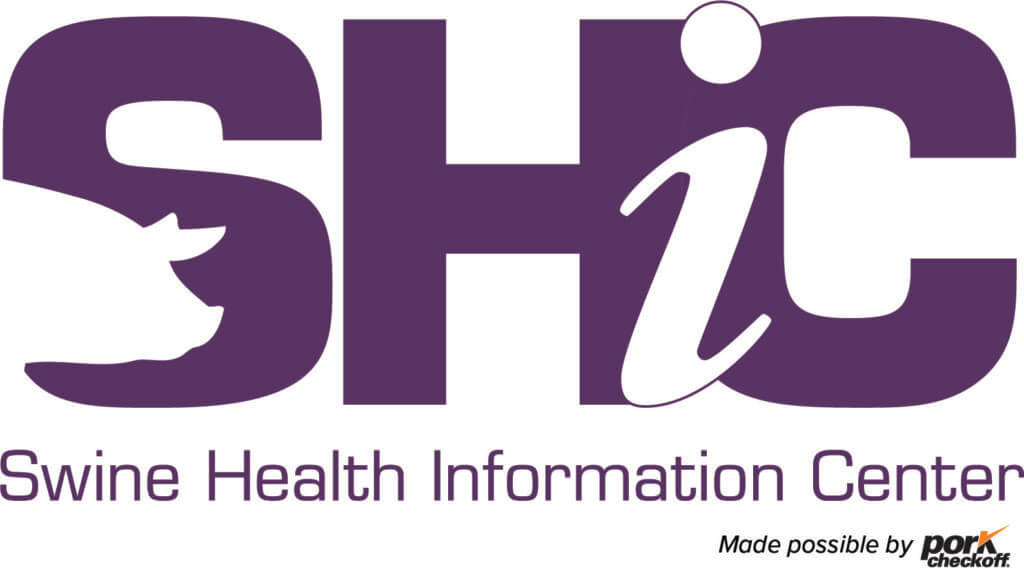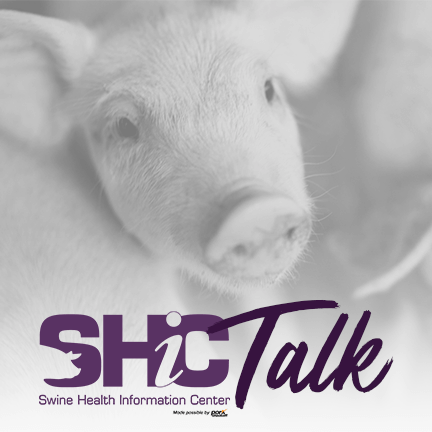
SHIC, launched by the National Pork Board in 2015 solely with Pork Checkoff funding, continues to focus efforts on prevention, preparedness, and response to novel and emerging swine disease for the benefit of US swine health. As a conduit of information and research, SHIC encourages sharing of its publications and research. Forward, reprint, and quote SHIC material freely. SHIC is funded by America’s pork producers to fulfill its mission to protect and enhance the health of the US swine herd. For more information, visit http://www.swinehealth.org or contact Dr. Sundberg at [email protected].

A project to evaluate technologies to prevent the spread of infectious bioaerosols is making progress. Led by Dr. Montse Torremorell at the University of Minnesota, the project is identifying existing and emerging technologies across different industries for their ability to contain bioaerosols in the face of swine disease outbreaks. Next steps will be to research feasibility and cost effectiveness of potential biocontainment technologies.
Currently the group is writing a report on the technologies to be considered for their implementation in agricultural settings. Technologies identified thus far include fibrous filtration, ionization, bipolar ionization, ultraviolet light type C, ultraviolet light type A, electrostatic precipitation, microwave, photo electrochemical oxidation, non-thermal plasmas, and air filters coated with antimicrobial materials.
Fibrous filtration, with 11 references in the review, is the most well-established and widely applied approach for biocontainment. Its method of action is the indiscriminate removal of particles from flowing airstreams. There is a balance between the particle size dependent removal efficiency for a filter, which should be as high as possible, and the pressure drop across the filter for a given flow rate, which is directly related to the energy costs of filter operation. Furthermore, filter loading increases pressure drop but also efficiency, and must be considered in filter application.
Ultraviolet light, with 16 references in the review, is an established route towards pathogen inactivation in aerosols, as nucleic acid molecules readily absorb photons near this wavelength (254 nm). UV-C (and potentially UV-A) sources can be incorporated in-ducts to directly inactivate pathogens in aerosols, in-conjunction with filters to inactivate collected pathogens, and in upper room bulbs to inactivate larger spaces. However, the latter typically cannot be operated continuously, as UV-C can be mutagenic or carcinogenic at high exposure levels.
Electrostatic precipitation, with 10 references in the review, is commonly used in the combustion industry. Electrostatic precipitation is a process wherein particles are unipolarly ionized through interaction with gas phase ions, and ionized particles are exposed to DC electric fields, which lead to their deposition. Electrostatic precipitators (ESPs) are competitive technologies with filters, able to achieve similar-to-better collection efficiencies with minimal pressure drops. They still require periodic cleaning of particles from deposition electrodes, and their performance does change over time as particles deposit.
Fibrous filtration, UV light sources, and ESPs are all established technologies used in commercial and residential and health settings, and all of which could be adopted in biocontainment strategies. There are more recently developed ionization schemes (16 references), photocatalytic approaches (nine references), and disinfection technologies (13 references) which are still at the developmental stage and need to be tested for efficacy at scales relevant to agricultural biocontainment and tested for animal safety.
In addition to the completed work, the project will also provide a cost-benefit and feasibility analysis on identified technologies. This portion of the study will also examine procedures for technologies’ application to swine farms for short- and long-term development. Additionally, investigators will assess a subset of technologies for their capabilities to biocontain viruses with different transmission routes and biological characteristics.

In October 2020, diagnostic laboratory sequencing of lung tissue from a US pig revealed the presence of canine parvovirus 2 (CPV2). The unexpected detection of CPV2 was assumed to be an incidental finding in lung tissue lacking significant lesions and not a contributor to disease. However, since this was the first known detection of CPV2 in swine, SHIC funded research to determine if CPV2 may be an emerging disease risk to US swine.
CPV2 is a non-enveloped single-stranded DNA virus which infects domestic dogs globally, resulting in gastrointestinal disease and immunosuppression. However, CPV2 originated from a cross-species transmission of feline parvovirus into dogs over 40 years ago and has since been detected in many wildlife species. Led by Dr. Ben Hause, an Assistant Professor at South Dakota State University, the SHIC-funded research project had three objectives to determine the cross-species transmission and pathogenesis risk to swine.
First, tissues previously submitted to the diagnostic lab from US swine were screened for the presence of CPV2 genome using PCR. Approximately 13% of tissues had CPV2 detected at relatively low DNA levels (mean Ct = 31). Second, serum samples previously submitted to the diagnostic lab from US swine were screened for the presence of CPV2 antibodies using hemagglutination inhibition assays. Approximately 66% of serum samples had CPV2 antibodies detected at low levels (most titers ≤ 80). Third, colostrum-deprived one day old neonatal pigs were inoculated through the oronasal route with CPV2 to assess their ability to replicate the virus and the ability of CPV2 to induce disease. Experimentally inoculated swine did not appear to develop productive CPV2 infections.
Overall, research determined that although CPV2 is capable of spillover into swine, the virus does not appear to be highly pathogenic to pigs. Continued vigilance of the industry is needed as mutations of CPV2 over time may alter the epidemiological situation and increase the disease risk to US swine.

SHIC Executive Director Dr. Paul Sundberg and Associate Director Dr. Megan Niederwerder talk with host Barbara Campbell Determan about feed research projects designed to prevent introduction of a foreign animal disease into the US swine herd.

Help us improve the Swine Health Information Center’s Global and Domestic Swine Disease Monitoring Reports by providing your comments via this short survey. Please click the button below and respond by June 15, 2022. Replies are anonymous unless you choose to include your name and email at the end.
We look forward to your replies and suggestions! Thank you!

This month’s Domestic Swine Disease Monitoring Report brings information about an overall moderate decrease in detection of PRRSV and PEDV in May. Even though this is the case, some regions still have activity of PRRSV (NE, IL, IN, and MO) and PEDV (NC, KS, IA, MO, and MN) above state-specific baseline levels. Also, this month’s report brings the predominant PRRSV strains detected in the states with high activity. In the podcast, the SDRS hosts talk with Dr. Guilherme Cezar, the new SRDRS coordinator, about his experience in animal health management, disease management, control, and his roles and contributions to the US swine industry under the SDRS project.

In this Global Swine Disease Monitoring Report, read about the first ASF vaccine available in Vietnam. You will learn more about alarm in western Europe after the report of the first case of ASF in domestic pigs in southern Germany, less than five miles from the French border. In Italy, four months after the first case of ASF was discovered in Piedmont, another 15 new cases were confirmed in the Lazio region, 250 miles southeast of the original cluster. Nepal has reported its first case of ASF. And the report includes information on the WAHIS 2021 report.
Copyright 2024 | Swinehealth.org | Website by Heartland Marketing Group